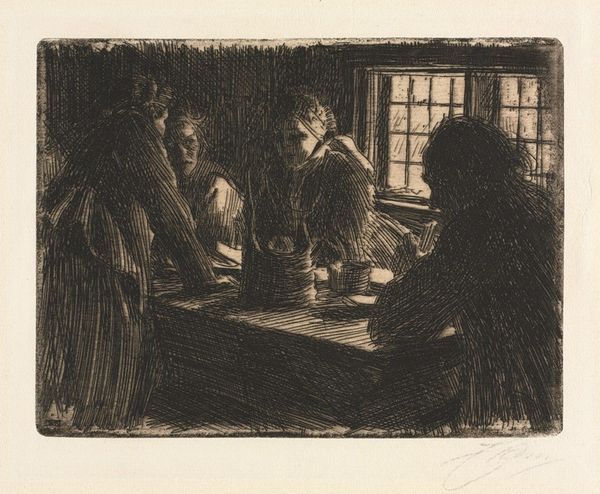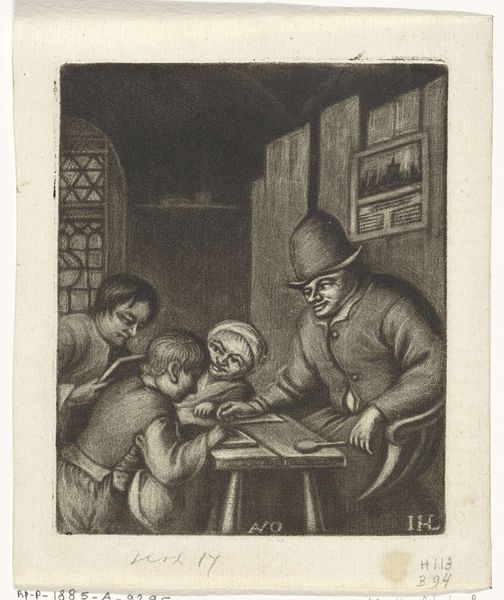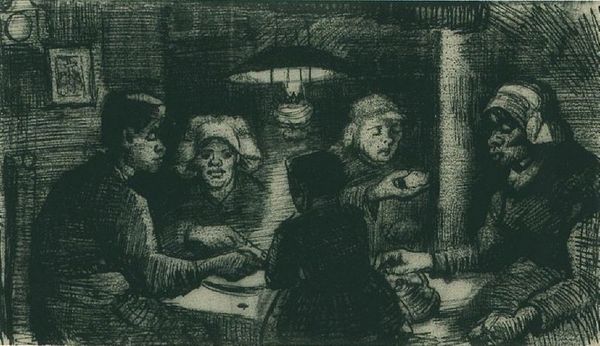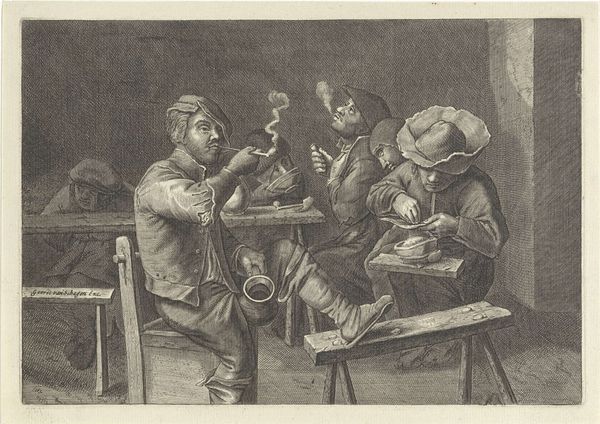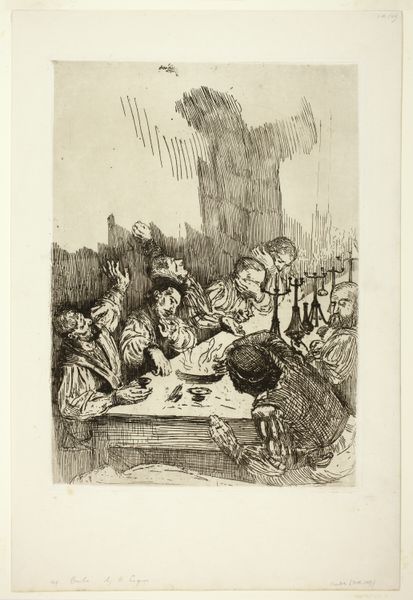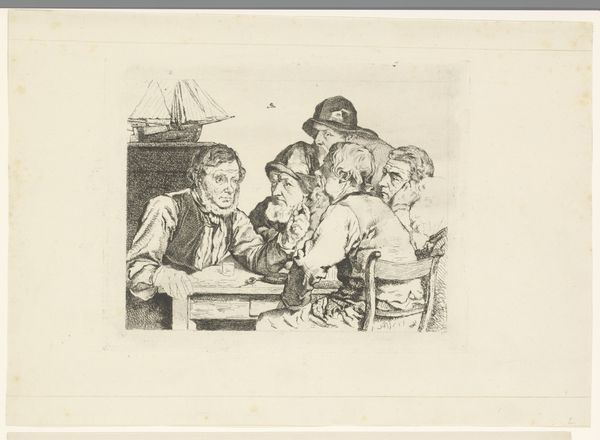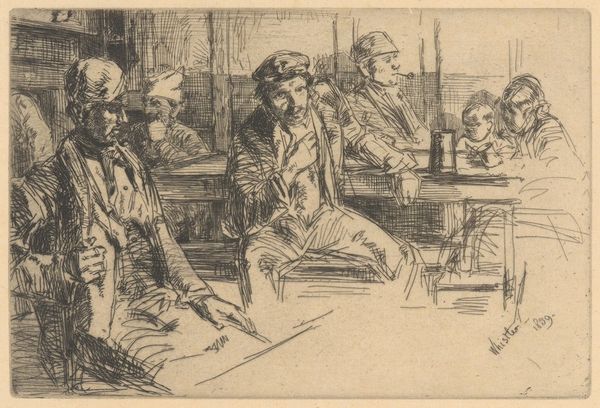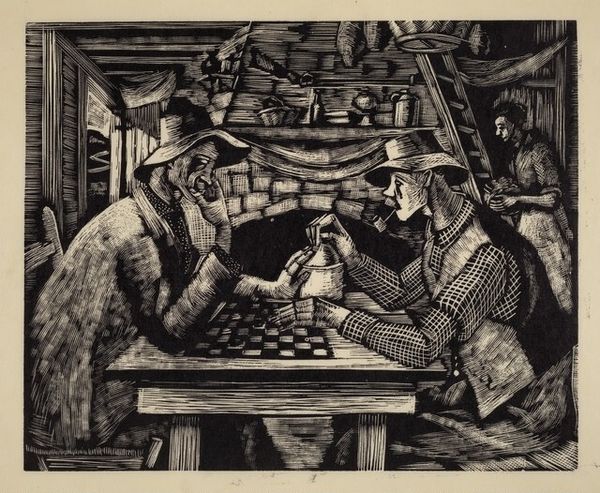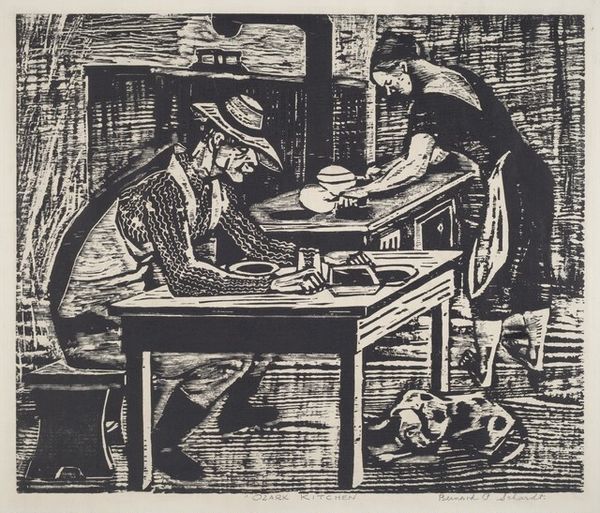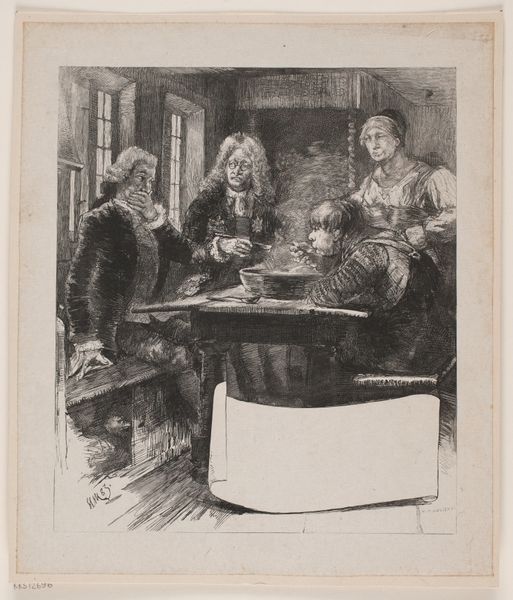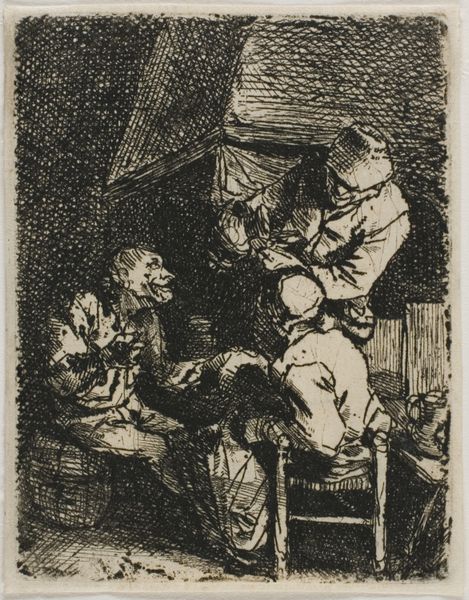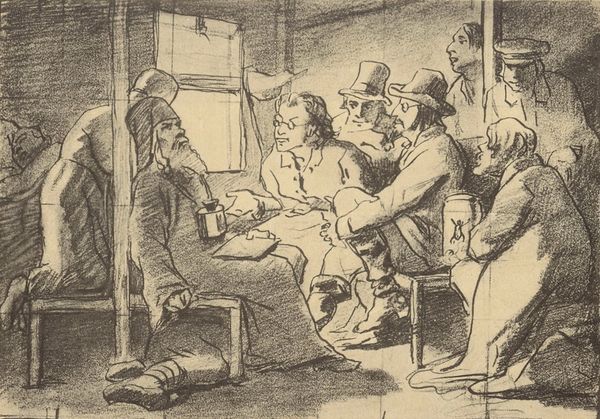
drawing, print, etching, engraving
#
portrait
#
drawing
#
medieval
#
narrative-art
# print
#
pen illustration
#
pen sketch
#
etching
#
figuration
#
line
#
pen work
#
genre-painting
#
engraving
Dimensions: height 69 mm, width 91 mm
Copyright: Rijks Museum: Open Domain
Editor: Here we have an engraving titled "Schoolmeester met drie leerlingen bij tafel," which roughly translates to "Schoolmaster with three students at a table." It's by an anonymous artist, dating sometime between 1671 and 1771 and located at the Rijksmuseum. The texture looks rough from the etched lines. What’s most interesting to you in terms of its physical creation? Curator: It's fascinating how this anonymous print captures a moment in the material conditions of learning. Consider the etching itself— the lines, the depth of the furrows made by the tool, how those relate to the dissemination of knowledge and ideas. Were these prints widely distributed? What sort of labor went into creating and selling these kinds of images, and who had access to them? Editor: That makes me wonder about the audience. It's not necessarily high art, is it? Curator: Precisely. And that's key. It challenges our understanding of art versus craft, or even art versus utility. Think about it – the materiality of the print itself would dictate who could afford to learn from it, even just observe. Paper, ink, the skills to create the plate… These were not democratically available. Editor: So the image is tied to social class and the accessibility of education. What about the act of learning in the image itself? Curator: Note the emphasis on the tools of learning— the books, the table. These weren’t just objects. They represented access, power, and a very specific social structure. How does the artist portray those dynamics? Editor: The schoolmaster is imposing. It brings attention to how those roles were shaped by the physical realities of their society. I hadn't considered how the very material of the print, the etching itself, would restrict who even saw the image, and understood the school dynamic. Curator: Exactly. We begin to understand art history as enmeshed in daily life, labor, and consumption— a material network that goes beyond simple aesthetics.
Comments
No comments
Be the first to comment and join the conversation on the ultimate creative platform.
